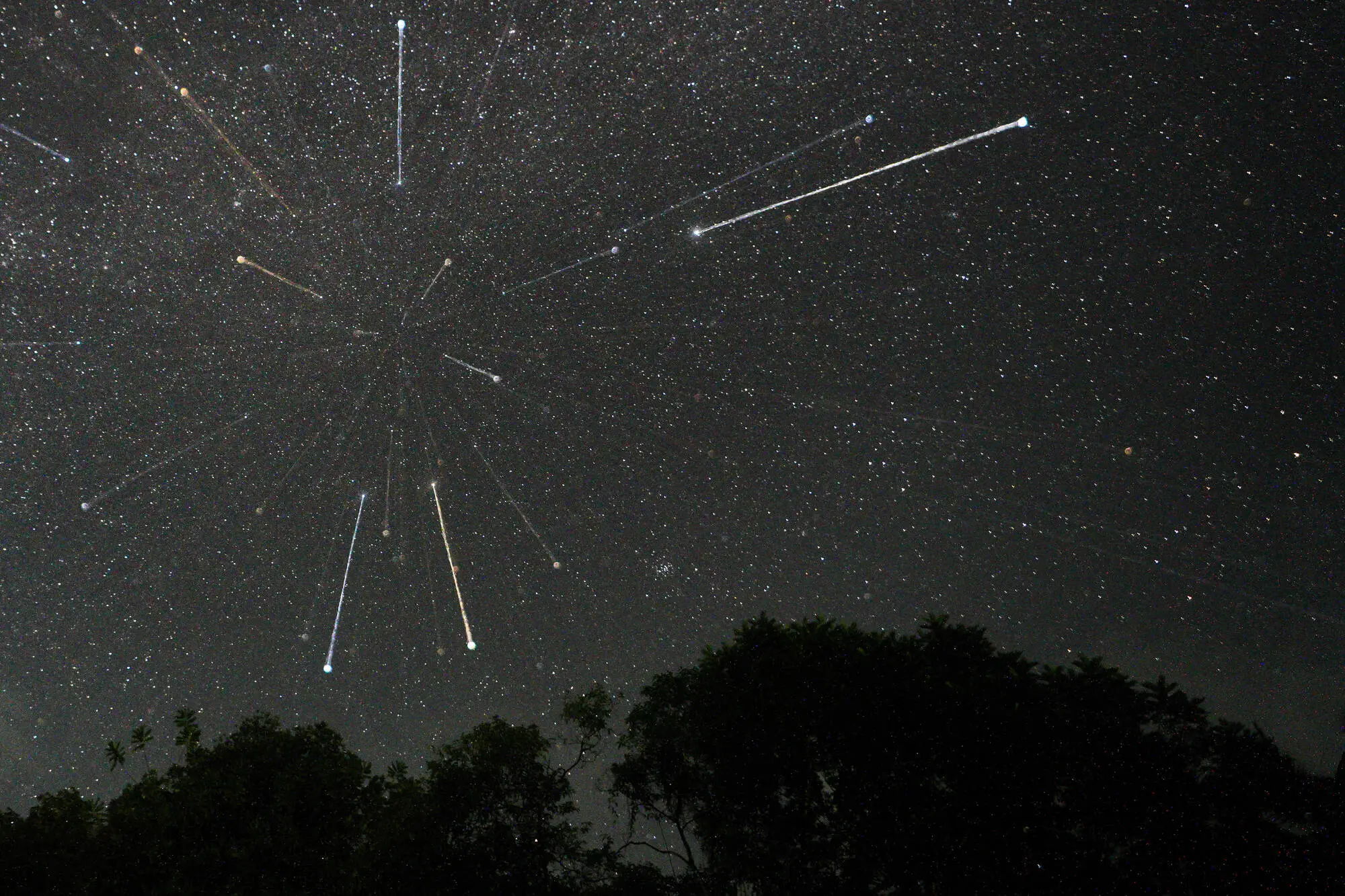Draconid meteor shower to peak tonight on October 8, 2025 — here’s what skywatchers can expect
-
 Stars are being seen in the sky during the Geminid meteor showers in Ratnapura, Sri Lanka, on December 14, 2023. The Geminids are a prolific meteor shower caused by the object 3200 Phaethon, which is thought to be a Palladian asteroid with a ''rock comet'' orbit. This makes the Geminids, together with the Quadrantids, the only major meteor showers not originating from a comet. (Photo by Thilina Kaluthotage/NurPhoto via Getty Images)
Stars are being seen in the sky during the Geminid meteor showers in Ratnapura, Sri Lanka, on December 14, 2023. The Geminids are a prolific meteor shower caused by the object 3200 Phaethon, which is thought to be a Palladian asteroid with a ''rock comet'' orbit. This makes the Geminids, together with the Quadrantids, the only major meteor showers not originating from a comet. (Photo by Thilina Kaluthotage/NurPhoto via Getty Images)The Draconid meteor shower will light up the night sky tonight, giving skywatchers a chance to see a beautiful display of shooting stars. The event happens every year in early October and comes from tiny pieces of rock and dust left behind by Comet 21P/Giacobini-Zinner. When Earth passes through this debris, the particles burn up in our atmosphere and create bright streaks of light.
What people can expect tonight
This year, the Draconid meteor shower is expected to be calm but still worth watching. Astronomers say that under dark, clear skies, people might see 10 to 20 meteors per hour. While that’s not as many as some other meteor showers, the Draconids are known for being unpredictable — some years they are quiet, and other years they suddenly produce hundreds of meteors.
One of the most special things about the Draconids is their timing. Unlike many other meteor showers that appear after midnight, this one is best seen just after sunset. That means families, children, and casual stargazers can enjoy the show early in the evening.
Viewers in the Northern Hemisphere, especially those living in North America, Europe, and parts of Asia, will have the best chance to see the meteors.
Why it’s called the Draconid shower
The Draconids get their name from the constellation Draco, also known as the Dragon. The meteors seem to come from this area of the sky, though they can appear anywhere. Even if you can’t find Draco, you can still see the meteors by simply looking up and keeping your eyes on the sky.
The shower happens when Earth moves through the dusty trail left behind by Comet 21P/Giacobini-Zinner. Every small bit of dust that hits the atmosphere burns up instantly, creating a quick flash of light.
When and how to watch
Experts suggest finding a dark, open place away from city lights for the best view. Since the meteors appear early in the evening, it’s best to start watching soon after sunset. You don’t need any special tools like binoculars or telescopes — your eyes are enough.
This year’s Moon will be in a waning crescent phase, which means it won’t shine too brightly or block the fainter meteors. That should make viewing conditions better than in years when the Moon is full.
The Draconids’ surprising past
The Draconids have a history of sudden “meteor storms.” In 1933 and 1946, skywatchers reported seeing thousands of meteors per hour. While such events are rare, they have made this meteor shower famous for its surprises. Scientists say that even though no storm is expected this year, the Draconids can always bring unexpected excitement.
The number of meteors seen each year depends on how much comet dust Earth passes through. Some years, the debris trail is thick, and other times it is thin.
A slow and gentle display
The Draconid meteors move slowly across the sky compared to other meteor showers. This makes them easier to spot and photograph. Viewers are advised to give their eyes about 20 minutes to adjust to the dark so that even faint meteors become visible.
Astronomers also recommend bringing a blanket or chair and looking up toward the northern sky. The longer you stay outside, the better your chances of seeing more meteors.
The Draconid meteor shower is just the start of a busy month for stargazers. Later in October, the Orionid meteor shower will take place, followed by the bright Harvest Supermoon that will light up the sky.
For now, tonight’s Draconids offer a simple and peaceful chance to connect with the night sky. Whether it’s a few meteors or a surprise burst, the event reminds us how special and ever-changing the universe is.
TOPICS: Meteor Shower
- When and where to watch the Beaver Moon and Taurid meteor shower this week
- When is the next meteor shower in 2025? Everything you need to know about South and North Taurid meteor showers
- When is the meteor shower tonight and how can you watch the Perseids at their peak?
- NASA shares tips to enjoy the Perseids meteor shower 2025 despite challenging full moon skies